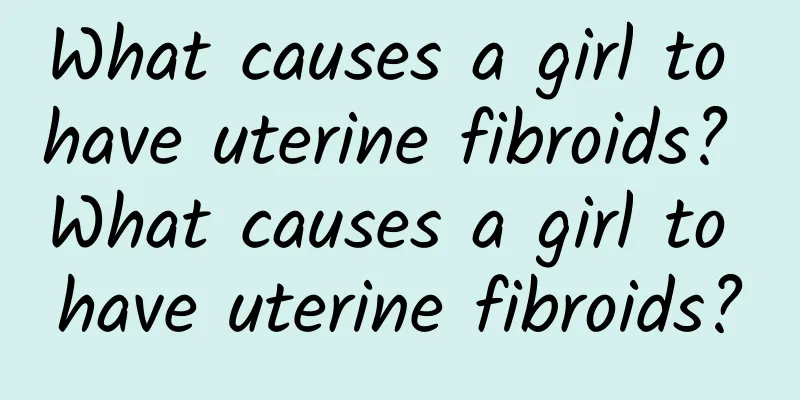What are the symptoms of recurrent pelvic effusion?

|
Physiological pelvic effusion and pathological pelvic effusion are two types of this disease, which are also common. So, what are the symptoms of recurrent pelvic effusion? Pelvic effusion is divided into physiological pelvic effusion and pathological pelvic effusion. Physiological pelvic effusion is easier to cure than pathological pelvic inflammatory disease, and sometimes it is a good thing. Because the pelvic cavity is the lowest part of the abdominal cavity in the whole body, when there is exudate or leaked fluid, it will be drained into the pelvic cavity, thus forming pelvic effusion. Some normal women will have a small amount of blood accumulated in the pelvic cavity during menstruation or ovulation, forming pelvic effusion. There are many causes of pelvic effusion, such as the patient's bad hygiene habits, such as having sexual intercourse during menstruation, within one month after delivery, taking a bath within one month after gynecological surgery, etc.; nosocomial infection caused by improper disinfection during artificial abortion and induced labor; chronic infection lesions, which may be inflammation of the gynecological system such as the ovaries and fallopian tubes in the pelvic cavity; it may also be caused by tuberculosis or tumors. The main clinical symptoms of recurrent pelvic effusion are: 1. Pelvic abscess: Pelvic abscess is mostly caused by acute pelvic connective tissue inflammation that has not been treated in time. Pulmonary abscess forms, which can be limited to one or both sides of the uterus, and pus flows into the deep pelvic cavity. 2. Pelvic congestion: Pelvic congestion syndrome, also known as pelvic congestion syndrome, is a special disease caused by chronic pelvic venous congestion. It is also one of the main causes of chronic pelvic pain in gynecology. It is more common in women aged 30-50 years old who have given birth. There is no such name in traditional Chinese medicine. According to its clinical manifestations and signs, it can be classified into the categories of abdominal pain, dysmenorrhea, leucorrhea, etc. The pathogenesis is mainly blood stasis and obstruction of blood vessels. |
<<: What causes ovarian cysts?
>>: Will ovarian cysts make menstruation normal? What are the symptoms?
Recommend
How to better control dysmenorrhea in life
Dysmenorrhea is a common phenomenon in life. In f...
What to eat for pelvic effusion?
What should I eat for pelvic effusion? 1. Pelvic ...
What are the causes of immune recurrent spontaneous abortion? There are 8 major causes
In fact, immune recurrent miscarriage itself has ...
There are many good ways to prevent adnexitis in life
As a common gynecological disease, adnexitis will...
Can I take Hongjin Xiaojie Capsules during menstruation?
Can I take Hongjin Xiaojie Capsules during menstr...
What to eat to supplement potassium after uterine fibroid surgery? Why should potassium be supplemented after uterine fibroid surgery?
Uterine fibroid surgery is a common method of tre...
I have gout and can’t eat beans? Control uric acid first, no need to worry about imperial disease
If you have gout, you can’t eat beans? Doctors po...
Which hospitals in China are the best for treating pelvic effusion?
In life, many female friends are troubled by pelv...
Endometrial tuberculosis regular hospital expert advice
I believe that every female friend does not want ...
How to cure ovarian cysts
How can ovarian cysts be cured? Ovarian cysts end...
Does sex help you lose weight? All thanks to the natural weight loss agent phenylethylamine
Is it true that someone will be shot by Cupid'...
Diet therapy can help you solve the pain of dysmenorrhea
"Abdominal pain during menstruation" is...
Why can’t I lose weight? Experts share 6 weight loss diet tips to keep slim and avoid gaining weight again
The secret of staying slim and not gaining weight...
What should I pay attention to after surgery for extrauterine fibroids? Do extrauterine fibroids require surgery?
Extrauterine fibroids are a common gynecological ...
What symptoms can Bartholinitis cause?
Bartholinitis is an inflammation of the Bartholin...









